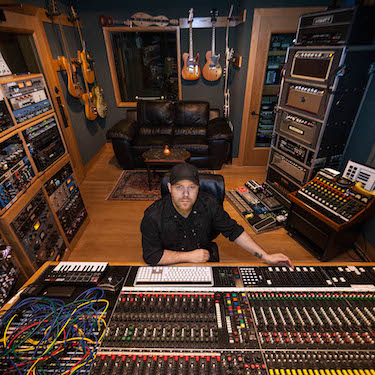|

NASHVILLE, TENNESSEE: David Kalmusky is a multi-platinum, award-winning producer, engineer and musician who has worked with Journey, Keith Urban, Shawn Mendes, Vince Gill, Justin Bieber, John Oates, and countless others. Together with long-time collaborator, Journey keyboardist, Jonathan Cain, Kalmusky & Cain built a private production studio in Nashville called Addiction Sound Studios. Designed by Chris Huston (The Who, Led Zeppelin, War) to zero-compromise standards, Addiction Sound Studio has a flexible layout, otherworldly acoustics, and all of the best instruments and recording gear available to mortal humans. “We keep everything miked up and ready to create,” Kalmusky said. “You can wander around the building at any phase in a project and keep working.”
In terms of gear, Kalmusky likens the studio to “a Noah’s Arc of recording equipment,” although he’s happy to look forward to future technologies as well as to preserve past classics. “For example, I’ve got a refurbished record cutter from 1938 sitting right next to an iPad that’s running early-alpha-stage software that won’t be commercially available until 2020,” he said. “I’m not an analog snob and I’m not a technology snob; I just love that at this point we can use everything in the history of recorded music and move forward. That said, we did have to restrict our gear list to only those pieces – both hardware and software – that we really love to hear; the things that sound incredible. There’s no time to mess around with things that don’t deliver.” Metric Halo Production Bundle plug-ins, including the flagship Metric Halo ChannelStrip, were obvious keepers.
“When I first started mixing in the box, there weren’t a lot of channel strip options available,” Kalmusky said. “Metric Halo ChannelStrip was the very best of a small number of choices. Today, there are dozens of channel strip plug-ins that people get excited about, and even though I’m happy to adopt new products and to chuck old products that have been surpassed, the stuff I love tends to stick around. It’s funny, most of us in the industry have now been on DAWs for twenty years or so, and it’s cool to see what’s stuck around from the early days. Metric Halo plug-ins, and especially ChannelStrip, are still my go-to solutions after more than a decade. Metric Halo makes ‘classic’ plug-ins! Even with all of the other options out there, I still love Metric Halo’s sound best of all. The compression and equalization are amazing.” Metric Halo plug-ins populate all of Kalmusky’s mix templates and include favorites like ChannelStrip, Transient Control, Multiband Dynamics, and HaloVerb (to complement Addiction Sound Studio’s underground echo chamber!).
But Kalmusky also does a lot of work in the analog realm, where the lack of instant recall is an obvious downside. “There are lots of instances where I’ll just dial something up with hardware in the heat of the moment and fire off a little mix or do something that becomes a favorite,” he said. “And then we wish later that we could get back to it. The Trident TSM console in my control room has no detents and so it was always hard to get anything more than an approximation for recall… until we started using Metric Halo SpectraFoo sound analysis software! Now we have a routine where an assistant engineer or intern loads up SpectraFoo at the end of every day, runs a sine wave sweep through each channel of the Trident, and saves the resulting frequency response in SpectraFoo. Then if we need to recreate an analog setup, they can just match the saved response and get everything to within one tenth of a decibel. We’ve had this practice for the last two or three year, so pretty much everything I’ve done in that time has used SpectraFoo.”
Engineer and studio manager Ethan Barrette has perfected the Metric Halo SpectraFoo workflow. “We mainly use the Transfer Function Measurement system because it has incredible frequency and phase resolution and the ability to save responses,” Barrette said. “Before arriving at SpectraFoo, we had tried other real-time analysis software, but the resolution was always too coarse. In addition to the Transfer Function, we also use the THD scope and phase versus power tool to discover that a dozen of our patch points were out of phase, which we obviously fixed right away!”
In addition to the Trident settings, Addiction Sound Studio assistants commonly “record” vocal chains using Metric Halo SpectraFoo. “Sometimes I’ll especially love a vocal sound I’m getting, so I ask my assistant to save it with SpectraFoo,” Kalmusky said. “Then the next time we have that vocalist in, we can have precisely the same vocal chain ready to go.” Barrette also uses SpectraFoo to sweep all of the analog gear in the studio. “There are a lot of vintage pieces in the studio,” he said. “When David suspects that something might not be sounding right, we run the sweep again. We’ve found lots of tubes in the early stage of failure, as well as capacitors that need replacing.”
Featured in Fast-and-Wide.com. |